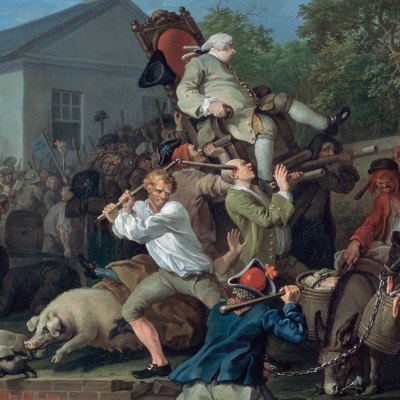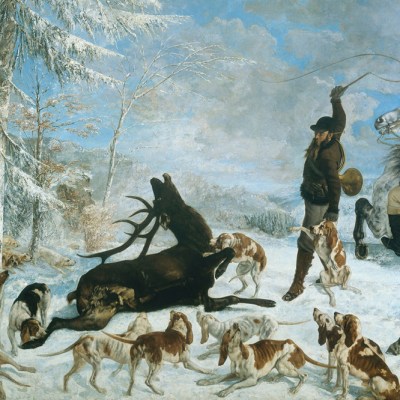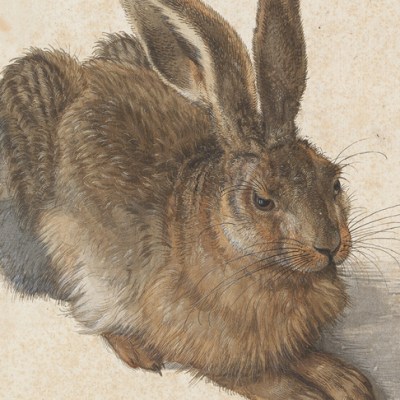This exhibition at the recently renovated and expanded MK Gallery is a triumph. George Stubbs is one of the most beloved English painters, yet before this he had not been treated to a significant exhibition in Britain for more than three decades. The loans, especially those from country houses and private collections, bring some unfamiliar delights. The curators correctly hail Stubbs as a great artist of the Enlightenment, and persuasively draw out his deep knowledge of the emergent fields of comparative anatomy, obstetrics, zoology and veterinary science: in a brilliant coup de théâtre, they have paired the drawings for the plates in Stubbs’s seminal The Anatomy of the Horse (1756–58) with the actual skeleton of Eclipse, the legendary 18th-century racehorse (and the subject of several paintings by the artist). But the show also evinces Stubbs’s deep moral sensitivity. He endowed his human and animal portraits alike with dignity and added an enigmatic psychological depth to what can at first appear like a bland Georgian Arcadia.
Finished study for The Fourth Anatomical Table of the Muscles of the Horse: the deeper muscles exposed and the head considerably dissected (1756–58), George Stubbs. © Royal Academy of Arts, London

The pictures assembled here exude his characteristic serenity and contemplative beauty: Stubbs has the gift to make paintings devoid of incident or narrative drama completely engrossing. Much of this comes from the beguiling sense of suspended movement in his animal subjects. In a portrait from 1793 of the groom to the Prince Regent, the riderless horse behind William Anderson glides through the air with an airy lightness, all four hooves extended in a nimble, bounding leap. In another portrait from 1777, John and Sophia Musters pass on horseback before the facade of Colwick Hall, their country seat. Stubbs contrasts the restrained procession of the horses with the scampering dash of the two dogs on the ground, generating a quiet tension between propulsion and a stasis that has often been identified as classical in inspiration. While Stubbs championed the observation of nature over deference to the ideal, his travels in Italy in 1754–55 clearly left their mark in his habits of composition – the subtle geometry underpinning his placement of human figures, the frieze-like arrangement, in painting from 1762, of intertwined mares and foals from the Rockingham stud.
John and Sophia Musters Riding Past the South Front of Colwick Hall (1777), George Stubbs

The counterpoint of speed and stillness was at the heart of Stubbs’s interest in the spheres of sport and toil. An acute artist of human work cultures – as demonstrated by a gentle scene of labourers on Lord Torrington’s estate painted in 1779 – Stubbs was also fascinated by the burdens imposed on animal bodies. His forensic attention to horse anatomy, as honed through 18 months of dissection and study in a Lincolnshire barn, allowed him to capture the minute signs of strain and agitation in his animal subjects. The mellow landscapes and powdery blue skies serve to heighten the visual impact of the horses’ flared nostrils, bulging veins and wild eyes, threatening to dissolve the peaceful mood. Stubbs’s most famous representation of this distress is the rubbing down of the frantic and exhausted but victorious Hambletonian in 1800 (now hanging at Mount Stewart in Northern Ireland). But the 1762 painting of Molly Long-Legs in this exhibition already points in this direction, with the long, spindly legs shaped by the harsh routine of exercise (including the ‘sweat’, when the horse’s legs were wrapped in thick blankets), the bright pink tongue of the gasping mouth, and the white marks where the saddle has worn away her coat. The horse’s lithe and powerful body has been remade through human discipline.
‘The greatest painter of racehorses did not like horseracing. The antipathy was part of his greatness.’ So argues Nicholas Clee in the stimulating catalogue accompanying the exhibition. Stubbs explored the limits of horses’ suffering in his obsessive depictions of lions chewing into their flanks, an exercise in sublimity and excess. But there is an anticipated or suppressed violence that infuses some of the hunting and racing series too, and which is legible on the animals’ bodies, their docked tails and cropped ears. The brute hold and short rein applied to the struggling creature known as Blank, the Duke of Ancaster’s bay stallion, by an impassive groom, in an early portrait from 1761, make for an unsettling scene. The climax of the exhibition comes with a darkly brooding painting from 1800 of the Earl of Clarendon’s gamekeeper preparing to slit the throat of a shot grey doe that lies prostrate and wounded at his feet. While the deer makes a desperate appeal to our sympathies, the gamekeeper’s features suggests pity for the suffering beast – but also the viewer’s complicity, drawn to imagine the perspective of the hunter.
Mares and Foals with an Unfigured Background (1762), George Stubbs

Cruel and tender: this exhibition reveals both sides of Stubbs’s vision of man’s relationship with the animal kingdom. In contrast to the evidence elsewhere of constraint and subordination, there is something very touching when Stubbs depicts animals at liberty. Just as he depicted horses communing in imagined landscapes, a kind of animal conversation piece set far outside of human supervision, so too he relocated exotic creatures like a regal panther and an adorable pair of frolicking leopard cubs (dubbed ‘tygers’) from the aristocratic menageries where he encountered them in Britain to imaginary sites of freedom, setting them loose in caves and on coastlines in Africa. His remarkable late drawings, meanwhile, which centre on the analogies between the anatomy of humans, fowls and tigers, speak to the common structures that for him seemed to unite different species, all of them worthy of wonder. They are the culmination of a ravishing exhibition – and one to catch before it moves to the Mauritshuis.
‘George Stubbs: “all done from nature”’ is at MK Gallery, Milton Keynes, until 26 January. The exhibition is at the Mauritshuis, The Hague, under the title ‘George Stubbs – The Man, The Horse, The Obsession’ from 20 February–30 August (exhibition dates extended).



